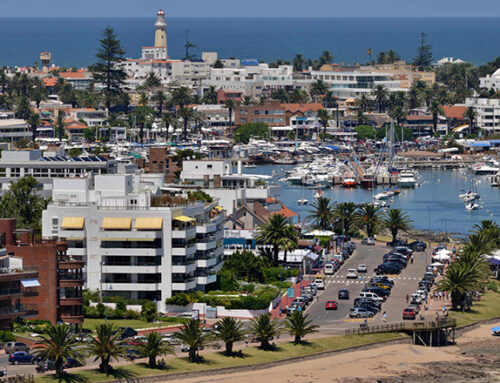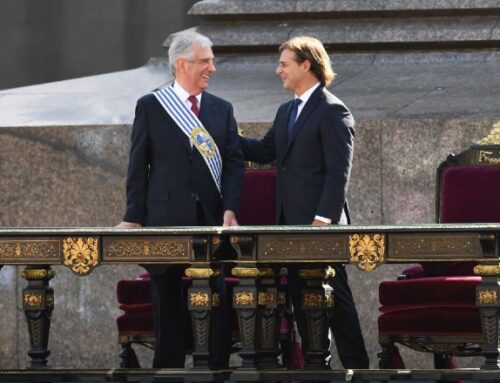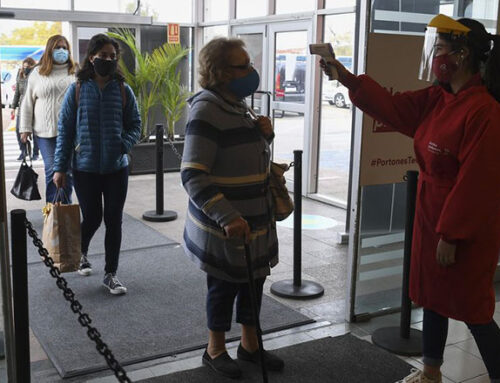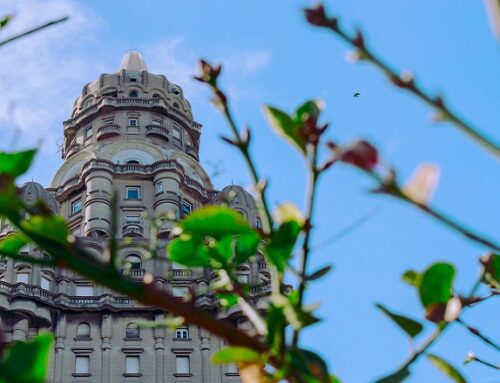With an initial investment of 12 million dollars, the International College opened its doors in Punta del Este aspiring to have 1500 students in three years. Other private institutions are experiencing growth of 30% in their student body.
Punta del Este is Uruguay’s main touristic destination. The recent 30 million dollars invested in the new Convention Center are a good proof of that. Private education institutions are also flourishing, taking advantage of the city increasingly cosmopolitanism.
The enrollment in private schools all around the country registered a slight but continuous rise from 2003 to 2014. According to the report “Outlook of Education 2014” from the Ministry of Education and Culture (MEC) it went from 63,686 students to 80.684.
Maldonado department, where Punta del Este is located, registered a small fall in 2014. But Punta del Este is a different reality.
The enrollment in Woodside School is growing continuously in a 20% per year. A similar growth experienced St, Joseph Mary College, which is growing at a 20% to 30% every year.
In St Clare’s College the growth was smaller: a 20%, but in five years. And one of the oldest Punta del Este private schools, the Insituto Uruguayo Argentino (IUA) is not growing in its enrollment but it does not lose any students.
All respondents attributed the enrollment rise to the country’s economical growth from the past years, which motivated Uruguayans to invest in education. Another cause is the migration from Montevideo, the capital city, to Punta del Este –said the principal and founder of Woodside School Claudia Domínguez. “In the last three or four years we experienced an important increase of students from Montevideo, because their parents settled in Punta del Este searching a better quality of life”– she said.
Cosmopolitan formation
“Punta el Este is very cosmopolitan”, added Domínguez. And this reflects the international diversity of the private schools. Foreign students represent 10% to 55% of the student body.
“More and more foreigners choose Punta del Este to settle down, searching quality of life, peace and safety”– said Domínguez. Some Argentinean families are settling down as residents as one of the parents continues to work in Argentina, coming home for the weekend. Others opt for remote work.
Argentineans and Brazilians lead the student body, but there are also Europeans, Americans and Asians, explained the different schools asked.
For Máximo Cirio President of the Board of Directors from St. Clare’s College, which has a 55% of foreign students; this better quality of life must to be reflected in a high educational level. “In the past two years we experienced a big increase of European students. Their parents come here searching peace and safety, avoiding terrorism threats. Some of them are looking to stay two or three years and return to their countries. They search an educational offer that allows their children to continue their education.
Because of that, bilingual education (with certificates like Cambridge University) and International Baccalaureates are mandatory.
In St Clare’s College, Cambridge courses start at elementary school, and in middle school IB (International Baccalaureate) is added. Woodside School (with a 30% of foreign students) is part from 15 years now to the International Schools Association (ISA), which works with UNESCO and nucleates schools all around the world. “The educational core revolves around diversity, sustainable development and peace”, explained Domínguez. Also, the high school courses finish with the International Cambridge Pre-U qualifications.
St. Joseph Mary institute (with a 10% of foreign students) adds Cambridge qualifications, offering bilingual middle school education. And the Instituto Uruguayo Argentino, which has 20% of foreign students from eleven different nationalities, offers Cambridge certificates, besides French and Portuguese in elementary school.
A new offer
The new International College opened its doors in this context. The project initial investment was around 12 million dollars. It was build “from the start, thinking in an international school”, says its director Daniel Rieta. The project was motivated by “Maldonado and Punta del Este’s growth, and because there was not a project like that, which combined, sports, academics and art”, he added.
International College will offer the Cambridge Primary Programme (CPP) in 5° and 6° primary grade and Cambridge IGCSE in Middle School. Also from 1° to 4° middle school grades Mandarin Chinese courses will be mandatory, and Portuguese in 5° and 6° primary grades.
The first year the school aspires to have 300 students and plans to reach 1500 students in 2019. It will also include International Baccalaureate.
A diverse offer with an emphasis in languages, sports and arts
International College
It has 5 hectares (3.5 of open sport area, which will be open to everyone, with a fee) and will have a parking lot for 150 cars. Languages, arts and sports will be its core. The classrooms will have smart boards. The fees range from 8,000 to 20,000 Uruguayan Pesos.
Instituto Uruguayo Argentino
It is one of the oldest Punta del Este’s private schools. It has a built-up area of 5,400 m 2 and 15,000 m 2 of sports fields, a vegetable garden, a hydroponic orchard and farm animals. The fees are around 15,600 Uruguayan pesos.
St. Joseph Mary
Started 12 years old and has a strong emphasis on sports. Two years ago they inaugurated a new building for Primary school, to attend the student body rise. The fees range from 6,000 to 14,000 Uruguayan Pesos.
St. Clare’s College
It started 13 years ago. It has 15,000 m 2 , with a built-up area of 4,000 m 2 . It has more English credits hours than Spanish. Fees range from 15,000 to 28,000 Pesos.
Woodside School
With 18 years in Punta del Este it has an emphasis in sports and arts, with stress in theatre, music and dance. This year its students won a NASA competition. The fees range from 7,800 to 20,000 pesos.
Source: El Empresario, El País





